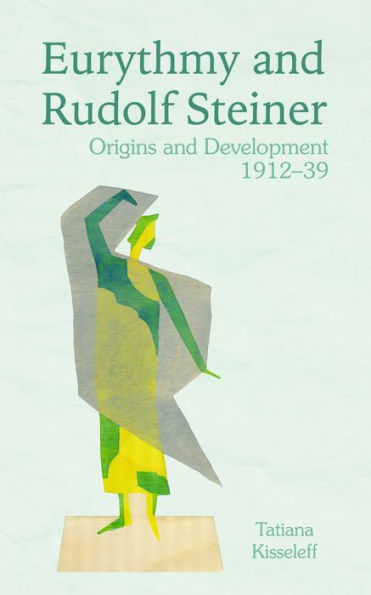In the autumn of 1912, Rudolf Steiner presented the first eurythmy performance. It marked the revival, in modern form, of the sacred art of dance, which had been used in the ancient Mysteries to express the movements of the stars and the planets. In the years that followed, Steiner and his wife, Marie von Sivers, developed eurythmy further, broadening it beyond the artistic to encompass healing and educational elements as well.
One of the pioneers of this new form of movement was the Russian anthroposophist Tatiana Kisseleff, who became a student of Steiner's and later a celebrated eurythmy teache.
In this remarkable book, available for the first time in English, Kisseleff describes the spiritual foundations of eurythmy as they were explored in Steiner's lectures and recounts the instruction she received from him.
This is both an eyewitness account of the origins of eurythmy and a record of a deeply personal journey of one person's efforts to master it. The book is illustrated throughout with photographs, drawings, facsimile reproductions from notebooks and posters advertising early eurythmy performances, alongside accounts of performances of various pieces including Shakespeare's The Tempest, Goethe's Faust, and Rudolf Steiner's own Mystery Dramas.
This is a fascinating account for eurythmists and anyone who wants to delve more deeply into eurythmy's history and development.
In the autumn of 1912, Rudolf Steiner presented the first eurythmy performance. It marked the revival, in modern form, of the sacred art of dance, which had been used in the ancient Mysteries to express the movements of the stars and the planets. In the years that followed, Steiner and his wife, Marie von Sivers, developed eurythmy further, broadening it beyond the artistic to encompass healing and educational elements as well.
One of the pioneers of this new form of movement was the Russian anthroposophist Tatiana Kisseleff, who became a student of Steiner's and later a celebrated eurythmy teache.
In this remarkable book, available for the first time in English, Kisseleff describes the spiritual foundations of eurythmy as they were explored in Steiner's lectures and recounts the instruction she received from him.
This is both an eyewitness account of the origins of eurythmy and a record of a deeply personal journey of one person's efforts to master it. The book is illustrated throughout with photographs, drawings, facsimile reproductions from notebooks and posters advertising early eurythmy performances, alongside accounts of performances of various pieces including Shakespeare's The Tempest, Goethe's Faust, and Rudolf Steiner's own Mystery Dramas.
This is a fascinating account for eurythmists and anyone who wants to delve more deeply into eurythmy's history and development.

Eurythmy and Rudolf Steiner: Origins and Development 1912-39
192
Eurythmy and Rudolf Steiner: Origins and Development 1912-39
192Related collections and offers

Product Details
| ISBN-13: | 9781782507628 |
|---|---|
| Publisher: | Floris Books |
| Publication date: | 07/15/2021 |
| Sold by: | Barnes & Noble |
| Format: | eBook |
| Pages: | 192 |
| File size: | 4 MB |
